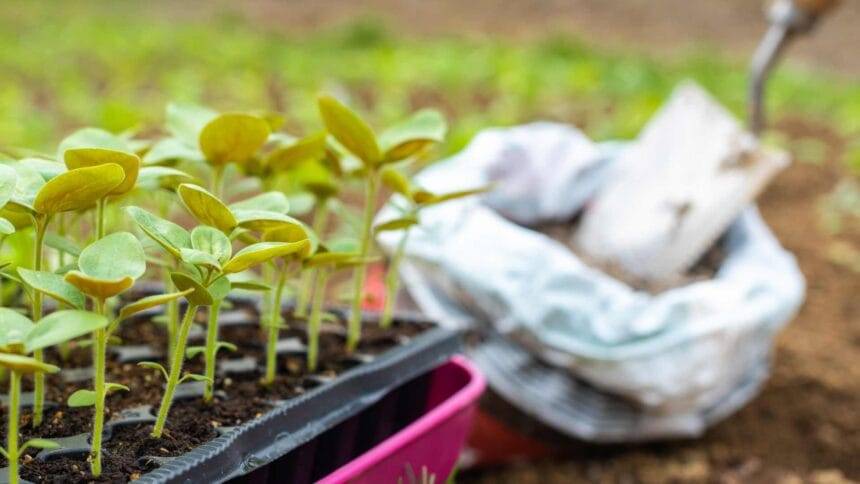Main Points In Hindi (मुख्य बातें – हिंदी में)
-
आर्थिक सुधार और आशावाद: दक्षिण अफ्रीका के कृषि क्षेत्र में सुधार के संकेत दिख रहे हैं, जैसे कि एग्बिज/आईडीसी एग्रीबिजनेस कॉन्फिडेंस इंडेक्स का 10 अंक बढ़ना। यह दर्शाता है कि कृषि क्षेत्र धीरे-धीरे अपनी गति पुनः प्राप्त कर रहा है।
-
बिजली की आपूर्ति में सुधार: देश में बिजली आपूर्ति में सुधार, विशेषकर लोड-शेडिंग की समस्याओं के बाद, बागवानी उत्पादन में वृद्धि का एक प्रमुख कारक बन गया है। स्थिर बिजली आपूर्ति ने कृषि उत्पादन को सकारात्मक रूप से प्रभावित किया है।
-
इनपुट लागत में कमी: उर्वरक और अन्य कृषि इनपुट की कीमतों में कमी किसानों के लिए राहत का कारण बन रही है। यह उनके लिए संचालन को अधिक प्रबंधनीय बनाता है और कृषि उत्पादन में सुधार की संभावना को बढ़ाता है।
-
जलवायु संबंधी चुनौतियाँ:हालांकि मौजूदा मौसम परिस्थितियाँ बेहतर होने की संभावना दर्शाती हैं, पूर्वानुमानित ला नीना घटना अगले सीज़न के लिए बारिश की उम्मीदें जगा रही है। लेकिन, यह भी ध्यान देने योग्य है कि मौसमी सुधार के अलावा, बड़े स्थायी मुद्दों पर ध्यान देने की आवश्यकता है।
- स्ट्रक्चरल मुद्दों का समाधान आवश्यक: सिहलोबो ने चेतावनी दी है कि वास्तविक दीर्घकालिक विकास के लिए, सरकार को बुनियादी ढांचे, पशु रोगों और नए निर्यात बाजारों जैसे महत्वपूर्ण मुद्दों पर ध्यान केंद्रित करने की आवश्यकता है। सिर्फ मौसमी सुधार पर निर्भर रहना पर्याप्त नहीं होगा।
Main Points In English(मुख्य बातें – अंग्रेज़ी में)
Here are the main points from the content:
-
Agricultural Resilience and Optimism: Despite experiencing fluctuations, the agricultural sector in South Africa, according to Agbiz’s chief economist Wandile Sihlobo, is showing signs of recovery. The Agbiz/IDC Agribusiness Confidence Index has notably improved, indicating a positive shift in business conditions.
-
Improvement in Electricity Supply: A significant driver of this recovery is the improvement in electricity supply, especially after the challenges posed by load-shedding at previous years. A more stable national electricity supply has positively impacted crop production, particularly in horticulture, which relies heavily on irrigation.
-
Decrease in Input Costs: Another reason for optimism is the decrease in input costs. Fertilizer prices have dropped by about 10%, with significant reductions in the prices of herbicides and pesticides, benefiting farmers who depend heavily on these inputs, thereby allowing them more financial flexibility.
-
Weather Challenges and Future Prospects: While recent droughts have severely impacted production, indications of improved rainfall due to the La Niña phenomenon could lead to a stronger agricultural performance in the upcoming seasons. This potential improvement is viewed as a critical moment for the agricultural value chain, which could enhance overall production and food security.
- Need for Structural Changes: Despite improvements, Sihlobo emphasizes the importance of addressing significant challenges such as infrastructure needs, animal diseases, and the opening of new export markets for sustainable long-term growth. Without addressing these structural issues, any improvements may only be temporary.


Complete News In Hindi(पूरी खबर – हिंदी में)
मजांसी के कृषि क्षेत्र में उतार-चढ़ाव का दौर आया है, लेकिन अंततः स्थिति बदल सकती है। एग्बिज़ के मुख्य अर्थशास्त्री वांडिले सिहलोबो का कहना है कि सेक्टर धीरे-धीरे अपने पैर जमा रहा है, और जबकि चुनौतियाँ बनी हुई हैं, आशावाद के संकेत भी हैं जिन्हें नजरअंदाज नहीं किया जा सकता है।
सिहलोबो बताते हैं कि एग्बिज/आईडीसी एग्रीबिजनेस कॉन्फिडेंस इंडेक्स – कृषि क्षेत्र में व्यावसायिक स्थितियों के लिए एक भावना संकेतक – ने उल्लेखनीय सुधार दिखाया है, जो 2024 की तीसरी तिमाही में 10 अंक बढ़ गया है।
“जबकि सूचकांक अभी भी 48 पर तटस्थ 50-अंक के निशान से नीचे है, यह तथ्य कि यह 10 अंक चढ़ गया है, बहुत बड़ा है। यह एक सकारात्मक बदलाव का संकेत देता है और दिखाता है कि चीजें सही दिशा में आगे बढ़ रही हैं,” वे कहते हैं।
सिहलोबो के लिए, यह नवीनीकृत आत्मविश्वास महत्वपूर्ण है, विशेष रूप से कृषि क्षेत्र में दीर्घकालिक विकास और निवेश के लिए। वह कहते हैं कि एग्बिज/आईडीसी एग्रीबिजनेस कॉन्फिडेंस इंडेक्स अक्सर कृषि विकास का एक प्रमुख संकेतक होता है, जिसका अर्थ है कि हम शेष वर्ष के लिए कृषि उत्पादन के मामले में कुछ बेहतर खबरों की उम्मीद कर सकते हैं।
बिजली की शक्ति (वस्तुतः!)
इस बदलाव के पीछे प्रमुख चालकों में से एक दक्षिण अफ्रीका की बिजली आपूर्ति में सुधार है, खासकर पिछले वर्षों में लोड-शेडिंग के दुःस्वप्न के बाद।
“फलों, सब्जियों और फूलों की खेती जैसे बागवानी उत्पादन, सभी सिंचाई पर बहुत अधिक निर्भर करते हैं, जिसके लिए स्थिर बिजली आपूर्ति की आवश्यकता होती है। हमने नवीकरणीय ऊर्जा और वैकल्पिक ऊर्जा के उपयोग में वृद्धि देखी है, लेकिन अधिक सुसंगत राष्ट्रीय बिजली आपूर्ति गेम-चेंजर रही है, ”सिहलोबो कहते हैं।
खेत की फसलों से लेकर पशुधन, मुर्गी पालन और यहां तक कि अबालोन खेती जैसी जलीय कृषि तक, पूरे क्षेत्र को ऊर्जा की बेहतर पहुंच से लाभ हुआ है।
उन्होंने आगे कहा, “यह अभी तक सही नहीं है, लेकिन हम जहां थे, उससे कहीं बेहतर है।”
कम इनपुट लागत = खुशहाल किसान
आशावाद का दूसरा कारण? कम इनपुट लागत. सिहलोबो ने इस बात पर प्रकाश डाला कि सितंबर 2024 में, उर्वरक की कीमतों में पिछले वर्ष की तुलना में लगभग 10% की गिरावट आई थी, साथ ही जड़ी-बूटियों और कीटनाशकों की कीमतों में भी क्रमशः लगभग 20% और 15% की महत्वपूर्ण गिरावट देखी गई थी।
“दक्षिण अफ्रीका में अनाज किसानों के लिए उर्वरक की लागत लगभग एक तिहाई है, इसलिए यह गिरावट उनके लिए बहुत बड़ी है। यह किसानों को सांस लेने की जगह देता है, खासकर जब हम 2024-25 के गर्मियों के मौसम में प्रवेश कर रहे हैं,” वह बताते हैं।
बुआई के चरम समय के दौरान ईंधन की कीमतों में हालिया नरमी ने भी सकारात्मक दृष्टिकोण को बढ़ाया है, जिससे सभी क्षेत्रों के किसानों के लिए परिचालन अधिक प्रबंधनीय हो गया है।
तूफ़ान का सामना करना – या उसका अभाव
बेशक, कृषि में, मौसम से ज्यादा कुछ भी मायने नहीं रखता है, और सिहलोबो यहां भी सावधानीपूर्वक आशावादी है।
“हम 2023-24 सीज़न के दौरान भयंकर सूखे से बाहर आ रहे हैं, जिसमें ग्रीष्मकालीन अनाज और तिलहन उत्पादन में 23% की गिरावट देखी गई है। लेकिन अब, पूर्वानुमानकर्ता ला नीना घटना के बारे में बात कर रहे हैं जो आगामी सीज़न के दौरान अधिक बारिश ला सकती है,” उन्होंने कहा।
क्षितिज पर बेहतर वर्षा के साथ, एग्बिज/आईडीसी एग्रीबिजनेस कॉन्फिडेंस इंडेक्स स्पष्ट है कि इस क्षेत्र को अंततः ब्रेक मिल सकता है।
“ला नीना कोई गारंटी नहीं है, लेकिन अगर यह लागू होता है, तो हम 2024-25 में एक ठोस सुधार देख सकते हैं। सिहलोबो कहते हैं, ”उत्पादन से लेकर नौकरियों और यहां तक कि खाद्य कीमतों तक, संपूर्ण कृषि मूल्य श्रृंखला के लिए यह एक बड़ी जीत होगी।”
लेकिन यह सब धूप और इंद्रधनुष नहीं है
जबकि सेक्टर में सुधार के संकेत दिख रहे हैं, सिहलोबो अभी भी जमीन पर है। उन्होंने इस बात पर जोर दिया कि अभी भी महत्वपूर्ण चुनौतियों का समाधान किया जाना बाकी है।
“हम केवल मौसम में सुधार या बेहतर इनपुट कीमतों पर भरोसा नहीं कर सकते। वास्तविक दीर्घकालिक विकास के लिए, राष्ट्रीय एकता की सरकार को बुनियादी ढांचे, पशु रोगों और नए निर्यात बाजार खोलने जैसे बड़े मुद्दों पर नियंत्रण पाने की जरूरत है। इसके बिना, हमें केवल अस्थायी सुधार ही देखने को मिलेंगे,” वह चेतावनी देते हैं।
शेष बाधाओं के बावजूद, सिहलोबो भविष्य को लेकर आशावादी हैं.
“हम अभी तक मुश्किलों से बाहर नहीं निकले हैं, लेकिन इस बात के स्पष्ट संकेत हैं कि सेक्टर में चीज़ें बेहतर हो रही हैं। यह केवल गति को जारी रखने और यह सुनिश्चित करने का मामला है कि हम उन बड़ी, संरचनात्मक चुनौतियों का समाधान करें जो हमें पीछे खींच रही हैं,” उन्होंने निष्कर्ष निकाला।
आगे पढ़ें: AWSA ने !Xhariep पुरस्कार समारोह में अग्रणी लोगों को सम्मानित किया
Complete News In English(पूरी खबर – अंग्रेज़ी में)
The agricultural sector in Majansi has experienced ups and downs, but the situation may ultimately change for the better. Agbiz’s chief economist, Wandile Sihlobo, says that the sector is gradually stabilizing. While challenges remain, there are also signs of optimism that shouldn’t be overlooked.
Sihlobo highlights that the Agbiz/IDC Agribusiness Confidence Index, a sentiment indicator for business conditions in the agricultural sector, has shown significant improvement, rising by 10 points in the third quarter of 2024.
“Although the index is still below the neutral 50-point mark at 48, the fact that it has increased by 10 points is substantial. It signals a positive shift and shows that things are moving in the right direction,” he says.
For Sihlobo, this renewed confidence is crucial, especially for long-term growth and investment in the agricultural sector. He notes that the Agbiz/IDC Agribusiness Confidence Index often serves as a key indicator of agricultural development, suggesting that we can expect better news regarding agricultural production for the remainder of the year.
The Power of Electricity (Literally!)
One of the main drivers behind this change is the improvement in South Africa’s electricity supply, especially after the nightmare of load-shedding in recent years.
“Horticultural production, such as fruits, vegetables, and flowers, heavily relies on irrigation, which requires a stable electricity supply. We have seen an increase in the use of renewable and alternative energy, but a more consistent national electricity supply has been a game changer,” Sihlobo says.
From field crops to livestock, poultry farming, and even abalone farming in aquatic agriculture, the entire sector has benefited from better energy access.
He added, “It’s not perfect yet, but we are in a much better place than we were before.”
Lower Input Costs = Happier Farmers
Another reason for optimism? Reduced input costs. Sihlobo pointed out that in September 2024, fertilizer prices fell by about 10% compared to the previous year, with substantial drops in herbicide and pesticide prices of roughly 20% and 15%, respectively.
“In South Africa, fertilizer costs account for nearly one-third of expenses for grain farmers, so this decrease is significant. It gives farmers some breathing space, especially as we enter the summer season of 2024-25,” he explains.
The recent easing of fuel prices during the peak planting season has also boosted the positive outlook, making operations more manageable for farmers across all sectors.
Weathering the Storm – or Lack Thereof
Of course, in agriculture, nothing matters more than the weather, and Sihlobo remains cautiously optimistic here as well.
“We are coming off a severe drought during the 2023-24 season, which saw a 23% decline in summer grain and oilseed production. But now, forecasters are talking about the La Niña phenomenon, which could bring more rainfall during the upcoming season,” he stated.
With better rainfall on the horizon, the Agbiz/IDC Agribusiness Confidence Index indicates that the sector may finally get a break.
“La Niña is not guaranteed, but if it holds true, we could see significant improvement in 2024-25. This would be a big win for the entire agricultural value chain, from production to jobs to food prices,” Sihlobo says.
But It’s Not All Sunshine and Rainbows
While there are signs of improvement in the sector, Sihlobo remains grounded. He stresses that significant challenges still need to be addressed.
“We cannot rely solely on improved weather or better input prices. For real long-term growth, the national government needs to tackle major issues like infrastructure, animal diseases, and opening new export markets. Without this, we will only see temporary improvements,” he warns.
Despite the remaining obstacles, Sihlobo is optimistic about the future.
“We are not out of the woods yet, but there are clear signs that things are improving in the sector. It’s just a matter of maintaining momentum and ensuring we address those significant structural challenges that are holding us back,” he concluded.
Read more: AWSA honors trailblazers at the !Xhariep awards ceremony
This text summarizes the current state of the agricultural sector in Majansi, noting improvements in confidence and conditions while also highlighting ongoing challenges that need to be addressed for sustained growth.










